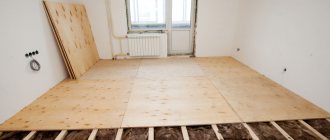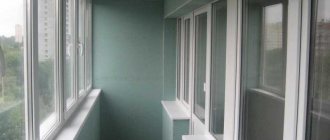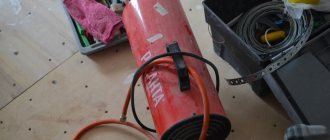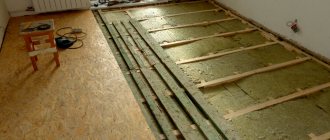The stretch ceiling is a thin PVC film, so the surface is easy to damage with a sharp object. Rough handling may result in cuts and punctures. In such cases, owners worry whether they will have to change the entire canvas. Fortunately, this is not necessary. In most cases, PVC film can be glued together. Let us consider in detail the most common situations and provide instructions on how to repair various types of damage to the canvas.
Types of paintings
You can damage the canvas in a lot of different ways - for example, through careless movements during the cleaning process, or during some kind of game. When determining how to repair a cut on a suspended ceiling, you need to take into account what kind of material was used as a canvas, so you will first have to understand all the materials suitable for these purposes.
All canvases are divided into two main types:
- Fabric. This option is made of polyester fabrics that are impregnated with a special polymer composition. To make fabrics, synthetic fibers are used, slightly diluted with natural threads. The average thickness of this fabric is about 0.37 mm. However, in this article we are talking primarily about the strength of the material and the possibility of its repair. Fabric sheets are quite convenient in this regard - they practically do not stretch and have a porous structure, thanks to which it is quite easy to repair such material. Replacing the entire blade is only necessary if the cut size exceeds 30 cm.
- PVC. This material is based on polyvinyl chloride fibers. With a relatively small thickness (from 0.17 to 0.22 mm), the material has good strength. It can withstand temperatures up to +100 degrees, and when this indicator is exceeded, it begins to melt. In the event of sudden and significant temperature changes, it may crack, as a result of which the strength of the canvas decreases. PVC fabric has good elasticity, allowing the material to be stretched if necessary. However, you should not overdo it with this - strong stretching and pressure on the film can lead to a change in its characteristics, and after repair it will be deformed.
Despite the similarity of composition and application, the materials presented have serious differences, which determine the repair methods suitable for each specific situation.
Applying a patch
To make the patch, a piece of the same fabric that was used in the ceiling itself is used. The dimensions of the workpiece should be a couple of centimeters larger than the dimensions of the damaged area. Such an amount of glue is applied to the patch so that its excess does not ultimately protrude out - it will be impossible to wipe it off from the surface of the ceiling, and the appearance of the structure will be ruined.
The patch is applied to the damaged area and pressed. There is no need for excessive effort during this operation - folds will appear. The glued patch must be carefully smoothed out after the glue has set a little so that the surface is as smooth as possible. At this point, the repair of the stretch ceiling cut can be completed, or you can go even further in the desire to return the ceiling to good decorative properties.
So, on the areas repaired using a patch, you can later apply a PVC application or some kind of design. Individual PVC flaps are quite suitable for use as patches - but you should always glue them not only over the cut, but also onto entire sections of the canvas, so that individual places do not stand out. The same goes for simple images.
Before you remove a cut on a suspended ceiling, you need to choose the right glue option. There are no special requirements for the glue used. By and large, there are only two parameters - fastening quality and color. Most modern adhesives are colorless and hold the surfaces being joined perfectly, so all such options are suitable for repairing suspended ceilings.
It is best to use the following types of glue:
- Universal glue – reliable, quite strong and durable;
- Specialized adhesive, which is divided into compositions for heavy, medium and light materials;
- Regular superglue.
Causes of damage to a stretch ceiling
As noted above, any fabric used for suspended ceilings initially has a fairly high strength - but it does not manifest itself at all when it comes to piercing and cutting influences. The biggest danger that a suspended ceiling can be exposed to is a common cut. Even a small cut in a stretch ceiling violates the integrity of the canvas and leads to complete deformation of the ceiling surface.
To understand how to eliminate a cut on a suspended ceiling, you need to handle it carefully, starting from the stage of its installation. However, during operation, care and understanding of the properties of the material are also required - for example, over the course of several days after installation, the material will adapt to new conditions, so you should refrain from any serious work in a room with a newly installed ceiling.
Most often, a cut on a stretch ceiling occurs for the following reasons:
- Errors were made during installation; low-quality material was used to install the ceiling, which, in addition, was also cut incorrectly;
- Careless rearrangement of large furniture - for example, a cabinet that has sharp edges that can damage the ceiling;
- It is strongly not recommended to install suspended ceilings in children's rooms - any active games will sooner or later lead to accidental damage to the canvas;
- Very often, the ceiling is damaged accidentally due to careless handling of sharp objects in the room - for example, during further renovation of a room, you can pierce the canvas with a screwdriver or cut it with a grinder.
There can be quite a few ways to damage the canvas, and as a result of such exposure you will definitely have to figure out how to repair a cut on a stretch ceiling.
Common damage to decorative shells and how to repair them
The ceiling is a base, physical contact with which occurs less frequently than with other enclosing structures. Therefore, there are few types of possible damage to tension fabrics; they will differ in origin, location and, most importantly, scale, which determines the possibility of repairs.
Let's look at how to repair a stretch ceiling made of film and fabric in specific situations.
Repairing a puncture in the canvas
A small hole in a suspended ceiling may appear as a result of an accidental puncture with an electrical installation tool (screwdriver, tester) during installation of lamps.
A shell with such damage can be repaired regardless of the material used to make the canvas.
Important! Before starting repairs, it is necessary to fix the edges of the damaged area with tape to prevent it from increasing in size under the influence of tensile force.
What should you do first when you discover a cut in the canvas?
If a cut in the canvas does occur, you need to take measures as soon as possible to ensure that it does not increase in size. Regular tape can help in this situation, but it is better to use double-sided or masking tape.
Reference! If a very small hole (up to 1 mm) has formed in the ceiling sheet, then you can simply coat it with glue. This will prevent the fabric from spreading, and will also make the puncture almost invisible.
Having provided the ceiling with “first aid”, you need to assess the situation and decide whether the damage is covered by the warranty.
First aid for damaged stretch ceilings
If the warranty period has not passed, and the break did not occur through the fault of the users, then to repair it it will be enough to contact the specialists of the company that installed the ceiling. For example, one of the warranty cases is the tearing of the baguette or the appearance of a tear along the seam. If the cut occurred due to careless handling during operation, then you need to either repair it yourself or contact craftsmen who will carry out the restoration for a fee.
Important! If the warranty for the installation of the stretch ceiling is still valid, then you should not repair it yourself.
Firstly, the technicians will deal with the damage much better and faster. Secondly, if you repair it yourself, all warranty benefits will be lost. Then, if subsequently claims suddenly arise regarding the quality of the film or its installation, it will no longer be possible to carry out free repairs under warranty.
In what cases is repair prohibited?
The advantage of the harpoon mount is its reusability. The latch can be used as many times as you like. A different matter is glazing bead fastening, when it is impossible to dismantle the structure. And difficulty arises not only if you need to eliminate a cut from the inside. The wiring has burned out, but it won’t be possible to replace the cable while preserving the ceiling. You should also take into account the characteristics of the material from which the canvas is made, as well as the type of impact to which it was subjected:
- Textiles are wet. When the water dries, streaks will remain. If clean water flowed from the neighbors above, it is enough to paint the fabric with water-based emulsion. Rust cannot be hidden with paint. And most often the water is dirty. We have to make a complete replacement.
- Vinyl is flooded with hot water. The heating riser broke, hot water pipes started leaking in the kitchen or bathroom. When heated, the film stretches and deforms. If it leaks cold, it will last 100 liters, otherwise you will end up buying a new one.
- The film stretch ceiling froze and burst. This happens in houses that are not intended for permanent residence, when the building is not heated, for example, in a country house. The critical temperature is +5 degrees Celsius.
In the latter case, the problem arises for natural reasons. As the film cools, it shrinks in size and the tension becomes too strong. But it is necessary during installation so that the ceiling is always level and does not sag.
Do-it-yourself repair of suspended ceilings after a cut
There are several options for eliminating the defect yourself, which depend on the type of stretch ceiling. If you have a fabric ceiling installed, consider yourself incredibly lucky. Repairing minor defects is quite simple.
Option 1. You need to buy nylon threads that are as close as possible to the color of the fabric and carefully sew up the hole. Then, if necessary, paint over the seam.
Option 2. You can make a patch. To do this you need a piece of fabric or glass wallpaper and any colorless glue. Glue the patch on the back side of the canvas, pressing the edges tightly. Then, using a spray gun, treat the entire surface of the ceiling with water-based emulsion.
When repairing a ceiling made of PVC film, the repair will be more difficult. In this case, the location and size of the cut plays an important role. In the event of a puncture, repairs can be carried out without much effort.
You just need to buy special glue at a hardware store or installation company that installs ceilings. The puncture is sealed, and the ceiling looks like new again.
Repairing a cut stretch ceiling is a more complex procedure and requires greater care. There is one more limitation - repairs on your own are possible if the length of the damage does not exceed 2 cm. It is practically impossible to solve a large problem on your own; it may even make it worse.
Weigh all the pros and cons of self-repair so as not to lose the warranty and not pay later for mistakes. Option 1. Possible in case of a cut in the ceiling near the wall (maximum 20 cm). First you need to remove a piece of the damaged ceiling, cut off a piece. Then take a small piece of antenna cable and glue the edges of the canvas to it. After the glue has hardened, heat the film with a hairdryer and carefully install the ceiling into the profile groove.
Option 2. If the gap is far from the wall, you can put a patch on it. This is, as a rule, the same piece of film, which after installation is specially left for these purposes. It is cut to fit the cut, then glue is applied. The patch is pressed, after which the excess glue is removed with a cloth.
This option is suitable for places where the patch will be invisible. If the cut is in a visible place, then it can be disguised with decorative elements (butterflies, stars).
Option 3. The case of a large gap near the chandelier. Cuts near the chandelier can be masked with a mirror, a polyurethane decorative plate, or an additional level covered with the same film as the ceiling. The color can be either the same or contrasting.
The extra ceiling level is also suitable for larger cuts in other locations. It will not only disguise the damage, but will also look like an additional decorative element.
Option 4. Fake lamp or ventilation grill. In some cases, small cuts are decorated with these elements. A ring of plastic is glued around the cut, the film inside is cut out and a false lamp is installed. The grille is glued in the same way.
Temporary ceiling sealing
To perform a temporary repair of a cut stretch ceiling, you need to prepare a set of materials and tools, which includes:
- Masking tape or fabric tape;
- Scissors, regular tape and a small piece of cable about 10 cm long;
- A patch made from the remains of linen;
- Nylon thread, needle, varnish and paint;
- Hairdryer and spatula.
This entire set is necessary for the initial, temporary sealing of a cut. The fact is that small cuts on the surface of the stretched fabric tend to gradually spread, so first of all you need to take measures to localize the damage so that further rupture of the stretch ceiling does not occur.
Small cuts on any fabric can be dealt with very simply - just connect the edges of the cut with tape. To close pinhole punctures no larger than 2 cm in size, you can even use regular glue. This option will not be a panacea - it is only suitable as a temporary solution, and in the future you will still have to carry out a full repair of the cut in the stretch ceiling with your own hands.
Repair of suspended ceilings after a cut - tools
To repair coverings made of polyester fabric and polyvinyl chloride film, you may need the following tools:
Types of suspended ceilings with their pros and cons:
- ladder;
- sewing needle;
- scissors;
- a construction hair dryer is needed only if the PVC film needs to be made more elastic in order to be stretched well;
- roller on a long handle;
- a special spatula for filling tension coverings into a baguette;
- paint tray;
- ruler or tape measure.
Water breaks
When flooded, a suspended ceiling can withstand a large volume of water. The fabric itself ensures tightness. PVC stretches better than fabric and is able to retain water, thereby insuring the safety of the apartment’s finishing.
To drain the water, you need to make several punctures - one in the center of the formed “drop”, the second - where there is no water. They can be made with an awl or a thick needle. If there is not much water, the material will return to its original shape after draining the water.
A fabric ceiling can tear due to a large volume of water, since such material has less stretch than its PVC counterparts. Also, after water there will be stains on the surface that can be removed with paint.
Repairing suspended ceilings after a cut - which glue is suitable
For stretch fabrics, the adhesive composition must be colorless; only a transparent variety will make it possible to hide the defect so that it is noticeable only to the owners. It should harden quickly, but not harm the polyvinyl chloride. When repairing torn coatings, 3 types of compositions are used:
- Universal adhesive is suitable for gluing a variety of materials. With the same success it is used for gluing wallpaper made of vinyl and non-woven fabric. The “omnivorous” effect is provided by special resins that make it possible to glue almost everything together during repair work.
- Special glue is used exclusively for wallpaper; the type of surface material also matters. The manufacturer produces 3 types of special adhesive composition at once. Lightweight is ideal for weightless materials (such as paper). Medium varieties are suitable for acrylic and fabric wallpapers, heavy varieties are suitable for vinyl and non-woven wallpapers.
Despite the large selection, there are favorites that do the job better than others. Among them:
- Cosmofen - the glue hardens quickly, provides high strength, is resistant to temperature changes, and is absolutely safe;
- Somafix is a plastic composition that does not lose this property after drying, quickly glues surfaces, but requires them to be degreased;
- Cosmoplast is a company known for its wide range of adhesive materials, but only three brands are used for suspended ceilings - 500, 500L, 513.
In addition to these three, there are other contenders that cope well with the problems of suspended ceilings. This is Loctite and super glue Contact.
Questions and answers
I glued the patch onto the PVC ceiling using a special glue, but there was some excess glue left along the contour. I only noticed it when it dried. It looks rough and immediately accentuates the patch. How can you smooth the surface? Maybe you can dissolve some?
If the glue is not wiped off immediately and it has dried, then it will not be possible to fix it. The use of solvents is not advisable, since together with the glue they will dissolve the ceiling itself. Decorate the patched area in any convenient way.
PVC ceiling, straight cut hole. I tried to seal it with glue, but the edges kept coming apart. Can't do without a patch?
Unfortunately, if the hole is from a cut, and it is long enough, it will constantly be overcome by the tension force of the ceiling covering itself. Place a patch, then decorate this area in any way you like.
The hole appeared from the cat's claws. I repaired it with a self-adhesive patch, but noticed that the PVC sheet around it was slightly deformed, resembling a deflated balloon in shape. How to fix?
You need to check whether the patch fits well to the canvas, and then stretch it. To do this, open the baseboards and carefully pull up the material screwed onto the clamp. To make this easier, slightly heat the surface of the ceiling using a regular hairdryer.
When the canvas is prohibited from being sealed
Sometimes trying to seal the tension fabric with your own hands only aggravates the situation. Avoid doing ceiling repairs yourself if:
- the fabric has ruptured along the seam;
- the covering came off the wall.
In both the first and second cases, it will be necessary to dismantle the decorative surface of the stretch ceiling and reinstall it after repair.
Possible causes of such damage include: incompetence of the craftsman who installed the structure, poor quality of the material. Contact the company with a demand for a refund or a complete replacement of the ceiling.
Mounting a ring for a lamp
This method is only relevant for vinyl sheets. A special ring is glued to the damaged area, into which lamps are usually mounted. When the thermal ring is glued, a sheet is cut along its inner perimeter. If the damage is large enough, then nothing will have to be cut out.
When using this repair method, you need to take into account that the lamp will ultimately be mounted in the same way as any other lighting fixture on a suspended ceiling. Instead of lamps, you can use a fake ventilation grill or smoke detectors to disguise damage - they are installed in a similar way.
Cases requiring professional intervention
There are also situations when you cannot do without specialists. Let's look at them in more detail.
Detachment of a profile (baguette) is usually the result of poor fastening or too much tension on the canvas. In the first case, the profile is reinstalled and the panel is tensioned, in the second, it will need to be redrawn and reinstalled. In both cases, work is carried out free of charge.
If a seam rupture occurs, the suspended ceiling must be replaced, also free of charge.
The sagging ceiling requires reupholstery. The cost depends on the cause of occurrence:
- aging ceiling;
- high temperatures;
- incorrect tension of the fabric.
A complete replacement of the panel will also be required if it is used in unheated rooms. Negative temperatures lead to the destruction of the film structure. If the size of the damage is more than 20 cm, specialists will not carry out repairs. In this situation, you will also need to replace the canvas.
Carefully read the contract and guarantees of the company you are going to cooperate with. Other repair services are no different from those that you can do yourself. With only one difference: if specialists do not only installation, but also repairs for you, the warranty on the ceiling structures remains intact.
Darn
The above methods are suitable for repairing PVC film panels. To repair fabric tension covering, you need to use another method. You can try to sew up the hole.
Patch the break along the fibers
In any store that sells sewing supplies, you need to purchase regular nylon thread that matches the color of the ceiling. In order not to make a mistake with the shade, it is useful to take a piece of material to the store or take a photo of it. Next, simply sew up the hole.
Eliminating oblique cuts
Use the usual method to sew up the tear with nylon thread. But after the hole is mended, it would be best to go over the ceiling with water-based paint. This will not only disguise the hole, but also refresh the decor.
Repair cost
In some situations, damage occurs due to the fault of installation companies. Such defects are covered by a warranty, so calling specialists will be free. Therefore, look for these clauses in the contract. If they are not there, insist on including them in the contract, or contact other specialists. Choose companies with the longest installation warranty.
Repairing a stretch ceiling after a cut that was your fault will cost approximately 1,000 to 3,000 rubles, depending on the nature and size of the damage, as well as its distance from the wall. With more significant ruptures and cuts, even specialists will not be able to resuscitate the ceiling. The canvas will have to be changed, you will have to pay for new material. The fastening elements will remain the same, i.e. you don't have to pay for them.
Possible defects
In the vast majority of cases, incompetent repair work leads to new damage. Of course, even in the most difficult cases there are options for solving the problem, so you first need to assess how damaged the ceiling is.
There are a number of defects that cannot be dealt with:
- The fabric, which has completely come apart at the seams, will have to be completely re-stretched - gluing will not help in this case;
- If the ceiling is torn away from the wall, then the canvas will have to be re-stretched, and the structure of the stretch ceiling will have to be strengthened;
- If only one baguette comes off, then it can be carefully attached to its place without touching the canvas.
What cases are covered by the guarantee?
Repairs are performed free of charge when defects arise due to the fault of the manufacturer or installer. The main situations are as follows:
- The seam between the pieces of PVC film has come apart.
- The frame of the stretch ceiling extends from the wall.
- The film or fabric is not tucked into the baguette properly.
- The harpoon is not soldered well enough.
In the first case, the manufacturer gives a guarantee on the quality of the soldering and is obliged to install a new sheet free of charge. In other situations, warranty repairs are performed.
Another possible cause of damage is crumbling pieces of plaster or other finishing. In this case, it is important who did the preliminary work. If the company installs the ceiling, then the craftsmen must eliminate the consequences free of charge. And if you prepare it yourself, you will have to pay for repairs.
Note! Not all of the situations listed may be covered by the warranty. You need to read the contract carefully, as conditions may vary from company to company.
Non-warranty cases include the following situations:
- the cabinet or cornice was installed carelessly and the film was pierced or cut;
- homeowners independently dismantled the ceiling and damaged the canvas;
- the neighbors caused a flood and the film burst under the weight of the water.
If handled carelessly, the stretch ceiling can easily be punctured and torn. It can also crack from excessive pressure. But often a complete replacement is not required; cosmetic repairs are enough. Some types of work are even covered by a guarantee.
What should installers fix?
The installation team provides a guarantee on the canvas and the quality of work, but not all cases fall under it. Sometimes repairs are required after a cut in the canvas due to the carelessness of the owners. Restoration work will have to be done at your own expense. In a warranty case, repairs are performed free of charge to the customer.
The main such situations are:
- the seam between individual fragments of the film diverges;
- the frame moved away from the wall;
- the film is not fixed in the baguette frame;
- the harpoon (lock with protrusions) comes out of the profile grooves.
The manufacturer is responsible for the strength of the seams; if they come apart, he must carry out repair work free of charge. But sometimes the canvas is damaged by crumbling plaster. Responsibility for such a defect lies with the persons performing the finishing work. If they were carried out by the owner, you will also have to repair the damage yourself.
What to do if the suspended ceiling has moved away from the wall
The reason for this defect is the insufficiently good fastening of the frame:
- step too rare;
- low-quality screws;
- loose walls (for example, partitions made of plasterboard or aerated concrete) without additional fixation.
As a result of the action of tension forces, a gap may form between the profile and the partition.
To correct this defect, you will have to dismantle the canvas (along the entire perimeter or only in those places where it does not hold firmly) and additionally fix the baguette. There are three methods that are used in different situations:
- If the wall is strong, and the fastening was done too rarely (steps greater than 15 cm), it is enough to screw in additional screws.
- Several screws are screwed into loose partitions (plasterboard, aerated concrete) side by side, and they are placed in a “herringbone” pattern, that is, at an angle and in different directions.
- A more reliable way is to install spacers. It is also chosen when it is difficult or impossible to drill additional holes (for example, when finishing with tiles).
Let's take a closer look at the last option. You will need pieces of baguette, fasteners and tools.
The work progress is as follows:
- Spacers are made; for this, the baguette is cut into pieces of the required length.
- Place one end to the profile and the other to the ceiling, mark the location.
- A hammer drill drills holes in a concrete slab.
- Using a dowel, fix the section from above.
- The second piece of the profile is used to additionally wedge the support, screwing it to the frame.
- After this, the film is heated and the ceiling is installed in place.
How to seal a hole at home
The best way to restore a stretch ceiling at home is to use a patch. This option is optimal when the gap is not even, but slightly rounded or diverging in different directions. Applying glue to the patch is allowed only if the shape of the coating is preserved after the defect occurs. When gluing a patch to a hole in the material, you need to be as careful as possible so that the restored area does not stand out too much from the general background.
How to minimize the risk of ceiling “trauma”?
It is better to find out in advance what careless actions can lead to a defect.
- Installation of a cornice is one of the leading causes of ruptures in suspended ceilings. To avoid causing damage to the structure, wrap the sharp ends of the product with a soft cloth before installation.
- Toys flying near the ceiling are a frequent hazard, especially if they have protruding or sharp parts. In this case, you need to have a heart-to-heart conversation with the child in advance, but it is not a fact that it will help.
- A cork flying out of a bottle of champagne at an enviable speed may well tear the ceiling, so you should not give it the slightest chance, which will overshadow any holiday. Even a master champagne opener would be better off doing it elsewhere.
- Poor quality tension material, errors during installation. Pulling the fabric during installation is the reason why the seams come apart easily. An insecurely fastened profile will inevitably tear the suspended ceiling if it decides to leave its rightful place.
Other reasons are the installation of high-power lamps, the installation of window structures, the arrival of new large furniture in the house and the negligence of movers. Carelessness during routine cleaning is often to blame, since long nails are dangerous enemies of suspended ceilings.
Before sealing a suspended ceiling, it is better to think about the possible consequences, because any mistake could cost him his “life.” Therefore, first of all, you need to take into account that calling a specialist in most cases saves you from replacing the canvas.
Seamless fabric ceiling
If a small hole is found on such a surface, then we can consider ourselves very lucky. It is not difficult to repair such a hole. To do this, you will have to work a little with a needle, just mend it and then paint it over.
Important! When sewing up a hole, use the needle carefully so that new tears do not appear at the puncture sites.
The larger hole is sealed. Take a small piece of similar material and use it as a patch. But what if there is no suitable fabric? It's okay, take a piece that matches the color of the ceiling, because it will still be painted, and glue it to the damaged area.
The fabric can be glued with any glue, but be careful that the patch fits tightly to the fabric. Paint the treated area with a suitable composition. If the work is done correctly, this place will not be noticeable.
Fabric ceiling repair
Expert advice
To properly repair the tension fabric and extend the life of the decorative ceiling, use the following recommendations:
- Before attaching the patch to the coating, degrease the surface at the defect site to improve the adhesive properties of the glue. Use a stretch fabric care spray or alkali-free dishwashing liquid;
- for repairs, choose a special glue that craftsmen use when installing a decorative structure, and strictly follow the instructions for working with the composition;
- As soon as you notice a flaw on the ceiling, immediately fix the edges of the hole with tape. To do this, pull the edges of the hole together and secure them with adhesive tape;
- If the ceiling with photo printing elements is torn, the canvas can only be repaired if there is a minor defect. If the integrity of the image is damaged, the coating will have to be changed or decorated with a new design;
- Before you start repairing the canvas yourself, make sure that the cause of the cut is not a manufacturing defect (the hole was not formed due to mechanical impact). Then contact the company that installed the ceilings, then they will carry out the repairs free of charge or replace the coating;
- If the reason for the tearing of the canvas is mechanical damage, but the warranty on the ceiling is still valid, call a mechanic. The installer will carry out work on the reconstruction of the panel and will maintain the warranty until the expiration date.
Breaks in tension fabrics do not always require replacement of decorative ceilings. Most often they manage with minimal losses, eliminating the problem with the help of cosmetic repairs. But do not neglect the help of professional craftsmen who will correctly assess the scale of the disaster and carry out restoration of the finish.
Sources
- https://pod-potol.com/vidy-potolkov/natyazhnye/kak-sdelat-remont-natyazhnogo-potolka-porez-i-sposoby-ego-zadelki-svoimi-rukami.html
- https://potolok-exp.ru/remont-i-uhod/remont-natyazhnykh-potolkov-posle-porez.html
- https://infopotolok.ru/natyazhnoj/remont-natyazhnyh-potolkov-posle-poreza/
- https://KakPostroitDomic.ru/vnutrennyaya-otdelka/potolki/vidy-potolkov/natyazhnye-potolki/remont-natyazhnyh-potolkov.html
- https://dom-i-remont.info/posts/potolok/kak-zakleit-natyazhnoy-potolok-sposobyi-praktichnyie-i-originalnyie/
- https://HoroshijPotolok.ru/otdelka/kak-zakleit-natyazhnoj-potolok.html
- https://Potolok.expert/uhod/remont-natyazhnyh-potolkov.html
6 766
We patch fabric ceilings
If your suspended ceiling is made of fabric, repairs will be quite simple. Especially if the damage is superficial and does not affect the fabric base itself.
Small surface hole
If the damage is pinpoint, it can be fixed with a drop of glue. To do this, take any glue (preferably one based on cyanoacrylate), carefully drop it onto the surface and use a spatula to smooth it out so that there are no bumps or irregularities. Let it dry for 10-15 minutes and evaluate the result.
In most cases, small patches are not visible from a height of 2-2.5 m, so there is no need to mask them. If you see an unevenness and cannot sleep peacefully, knowing that it is there, decor can help.
In place of the former hole, you can stick a beautiful butterfly, star, flower and whatever your heart desires. Damage can be disguised so that no one would even suspect its presence.
Large hole in the fabric itself
It often occurs when a person tries to install a chandelier or spotlight on the ceiling by cutting it. Strong tension on the canvas and a sharp movement with scissors - and instead of a small hole you have a real Martian crater.
The problem can be solved in the following ways:
– the work boils down to sewing up the existing damage using a needle and thread in order to achieve maximum contraction of the fabric. This is extremely difficult to do if you do not have sewing skills. After the hole is sewn up, various fabric decors can be glued onto it. It can be all kinds of leaves, butterflies, stars, abstraction. As an adhesive material, you should use a special fabric adhesive, which is designed for repairing tension coverings.
Sew with thread and decorate- To install a patch - to do this, cut out a patch from the existing material, which will be 3-4 cm larger in diameter than the damage itself. Apply glue to the patch and lean it against the ceiling. Smooth out and wait until completely dry. If it is visually clear that there is a patch, it can also be decorated.
- Ready-made patch sticker - in stores you can find self-adhesive decorative elements with a patch effect, from which you just need to remove the protective layer and simply apply it to the hole. Quick, simple and effortless, and the variety of choices will allow you to effectively decorate any ceiling.
- Patch and paint - if you use your imagination and arm yourself with special paints for woven material, you can paint your ceiling in such a way that it will become a source of pride. Again, you need to patch the hole first.
Expert opinion
Mezentsev Sergey Petrovich
Residential renovation and finishing specialist
The fabric does not shrink so much during installation, so if a hole appears, it will be easier to eliminate it. If the decor option is not suitable, then at the site of the damage you can install elements of spotlights and use this to benefit the room.











